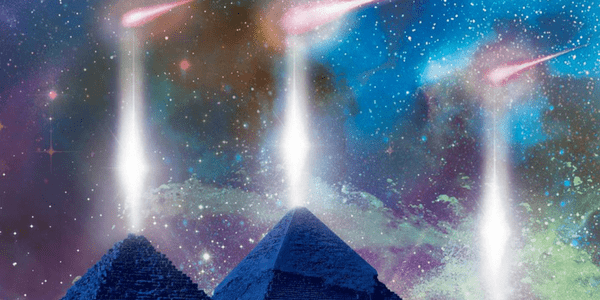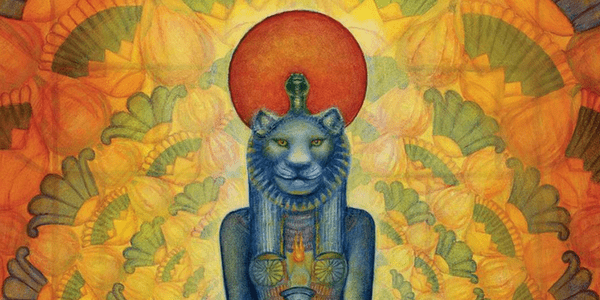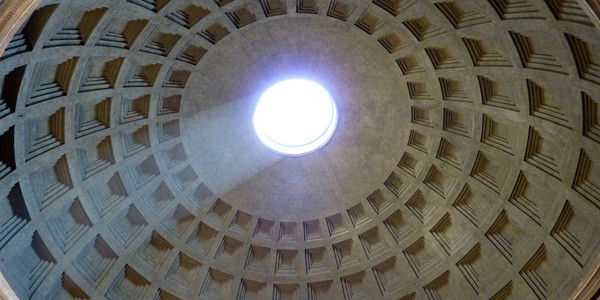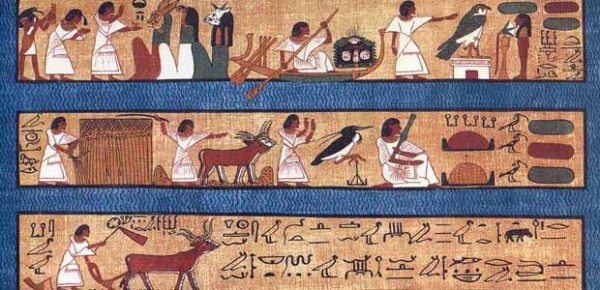
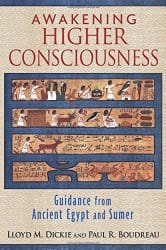
Awakening Higher Consciousness: Guidance from Ancient Egypt and Sumer, by Lloyd M. Dickie and Paul R. Boudreau
Inner Traditions, 978-1-62055-394-7, 246 pp. (incl. appendices, notes, bibliography, and index), 2015
The ideas expressed in Awakening Higher Consciousness: Guidance from Ancient Egypt and Sumer are paradoxically both simple and multi-layered. It may sound strange, but when I started reading the book, my experience was of peeling back the layers of the proverbial onion, but without the tears!
Lloyd M. Dickie and Paul R. Boudreau — both of whom have backgrounds in ecology, biology and a deep interest in Egyptology — have produced a highly readable book for those seeking to unlock their highest potential through myth and its symbolism. To that end, they explore the myths of several ancient cultures, with Akkad, Egypt, and Sumer being the main focus of their studies. The authors express quite complex and esoteric ideas in language that is accessible to the non-specialist. Dickie and Boudreau’s passion for their subject matter comes through quite plainly. They are academics, but I also suspect they are sincere seekers after illumination and truth. As the subject matter has been a lifelong interest of mine, I approached Awakening Higher Consciousness with a sense of excitement and curiosity. This is a book that needs to be read through once and then again to assimilate the symbols within your psyche. What the conscious mind appears not to take in, the subconscious mind will readily embrace.
Humanity has always enjoyed stories, both from the perspective of the storyteller and the enraptured audience. It has been and still continues to be a communal activity, reinforcing the identity and life of the group mind. I fully appreciate the significance of myth in my life. Its transformative powers strike deep at the heart of the subconscious, with each recounting these ancient tales initiate a transformative process within the self. This I understand through personal experience, as myth works on several levels and uses the language of symbolism to communicate its message.
The authors make an interesting assertion that myth may “help us as adults to understand the meaning and significance of life,” which is a slow process, due to the distractions of our outer lives. They develop this idea further by asking the reader to undertake an exercise. Firstly, to explore the connections between the experiences of both human and divine participant in the myth and their own lives. Further, to ask ourselves what insight can be gained from this process that has any relevance to their lives. How can these ideas be put to everyday use? Secondly, the authors ask us to move our attention inwards and objectively scrutinise our lives to develop an inner awareness. They bring to our attention the need to nurture the sensitive and introspective sides of our nature, and to balance the whole amidst the turmoil and upheavals of the world around us.
Dickie and Boudreau’s work provokes many questions, a useful technique to engage the mind in inner dialogue. They then offer us examples of well-known myths as tools in the task of building a rich inner life and higher consciousness. The path towards higher consciousness is often filled with struggle and redemption.
The Epic of Gilgamesh exemplifies the struggle for life, as it recounts the interaction between humans and gods. The hero king Gilgamesh (part human, part god) and his friend Enkidu go on an epic journey to find the source of immortality. It is a story filled with many challenges and lessons, particularly of self-will and ambition overriding discrimination, and the realization of what is of true worth in our lives. It is only through the death of his friend Enkidu that Gilgamesh realizes the true meaning of life and his own mortality.
The authors make an important statement regarding self-revelation: “The Egyptian myths, in parallel with that of Gilgamesh, also seriously question our ability to pay attention to our failures, which is required to realize our wish for wholeness.” Wise words, as growth and insight occur as a result of learning from our mistakes. Unfortunately many people, including myself, have at times been blind to the consequences of our failures. The negative cycle carries on until understanding finally hits us and a real breakthrough is achieved. This is self awareness brought about through the facing of challenges and pain.
The Osirian myth cycle, on the other hand, represents the ancient Egyptian myth of higher consciousness. It is a story of the life, death and resurrection of the god king Osiris. A universal story of the sacrificed god, who is murdered and dismembered by his brother Set out of jealousy. The goddess Isis then sets out with her sister Nephthys to recover the scattered parts of her spouse, and through magick is able to conceive a child, Horus, with the dead god. The mother and child undergo many difficulties until Horus reaches adulthood and challenges, then defeats his uncle. The story is multi-layered and deserves deeper study due to its complexity.
The authors illustrate this point by quoting René Adolphe Schwaller de Lubicz, who writes that “the only way we can understand the concept of wholeness is through our ability to appreciate the effects of the whole being divided into parts.” It is warning us against lacking self awareness and passivity in life. We are urged to use active and unconscious forces to gather our “scattered attention” in the fight for transformation.
Transpersonal psychologies infuse this work, as do the important, symbolist ideas of R. A. Schwaller de Lubicz, as well as with Hamlet’s Mill: An Essay Investigating the Origins of Human Knowledge and Its Transmission Through Myth, a ground-breaking book by Giorgio de Santillana and Hertha von Dechend. This book investigates the origin of knowledge and its transmission through myth, through the use of archaeo-astronomy (the study of ancient knowledge of celestial phenomena).
At the very heart of Awakening Higher Consciousness: Guidance from Ancient Egypt and Sumer lies the primeval myths of creation, suffering, illumination and redemption.


